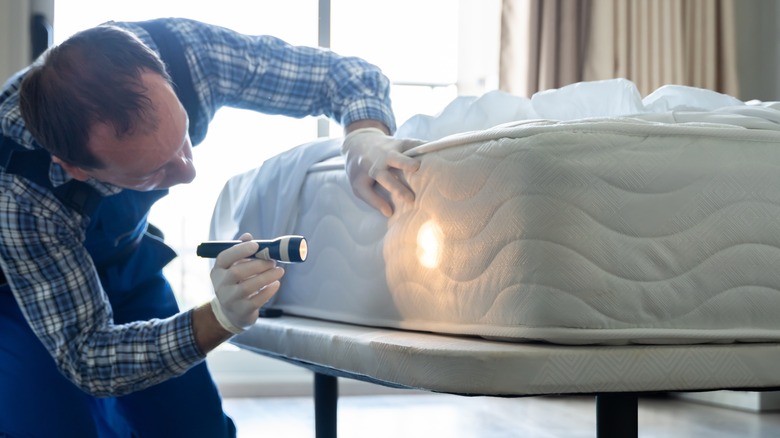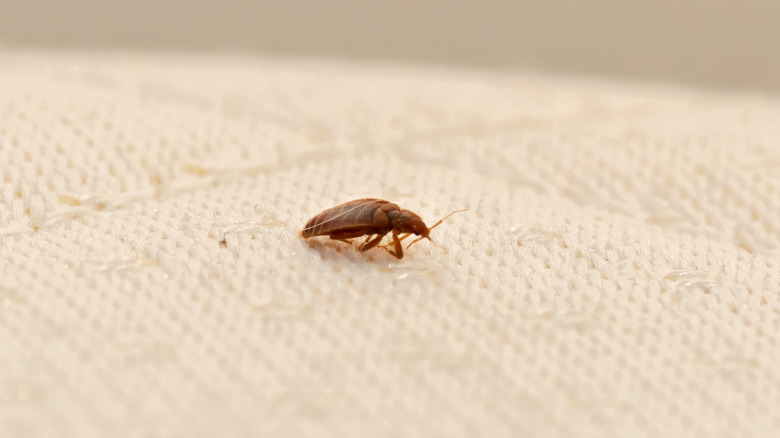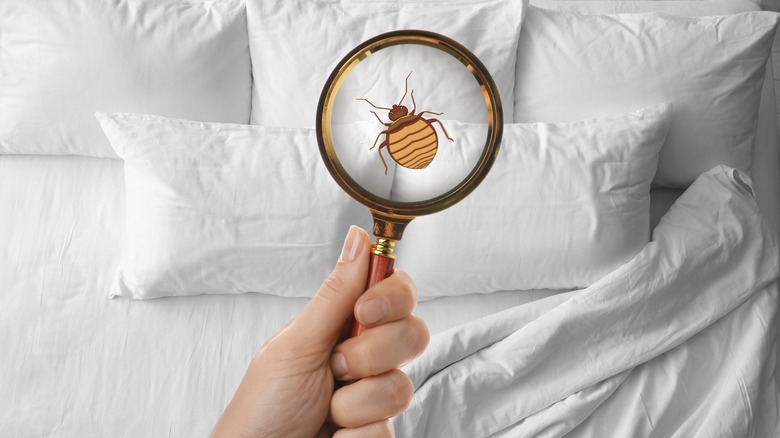Where Do Bed Bugs Come From?
If you're suffering from itchy and annoying red bumps, have found small smatterings of dark blood stains on your sheets, and noticed that your room has a sweet, almost musky smell, per Orkin, we've got terrible news for you. You might be sharing your home with a few thousand or more bed bugs, and these horrible insects reproduce quickly and are notoriously difficult to get rid of.
The United States Environmental Protection Agency says that some bed bugs resist the chemicals fashioned in labs to kill them. Sleeping Ocean reports that even pest control businesses find bed bugs the hardest to eradicate. They can be found in every state in North America and on every continent except Antarctica. But where exactly do they come from, and what can you do to prevent acquiring nearly invisible and uninvited roommates? Lucky for you, there are a few simple precautions you can take.
It all started in a cave
According to Sage Pest Control, bed bugs have been around for over 1,000 years, most likely targeting humans when they hung out in caves and shared a space with bats, their former favorite hosts. One thing led to another, and they evolved along with humans; suddenly, European settlers were playing house in the Americas with these uninvited freeloaders. Bed bugs, as we know them today, are hitchhikers, arriving on people, pets, and items and finding the coziest environments to set up shop. You'll commonly find them in single-family dwellings, apartments, and hotels; bed bugs like any warm and comfortable place. And as long as there's food available, they have no problem adapting to their surroundings, writes Bed bug Lawyers.
Unfortunately, travel is the number one risk of bringing an infestation upon your household. So if you suffer from wanderlust or consider yourself a seasoned globetrotter, congratulations. You're living dangerously. Hair, animal fur, clothing, and your luggage are prime hiding spots. And you'll never know that they were hitching a ride until it's too late. If you're a frequent flyer afraid of bringing home a new "friend," you can always check out The Bedbug Registry for past and recent hotel outbreaks.
More on these blood suckers
Bed bugs are vampiric, latching on to a host and sucking their blood until they're satiated. Treehugger says that they turn bright red when they're feasting. These little brutes are classified under the order Heteroptera, per Parasites & Vectors, and are considered true bugs. Healthline notes that bed bug bites look like tiny welts or blisters and typically form in clusters or lines. Like mosquito bites, they can make you itch, and scratching can cause an infection. But the CDC states that they don't carry or spread diseases.
Being that they're only around 5 millimeters long (about the size of an apple seed), it goes without saying that bed bugs are the ultimate experts at hide and seek. It's also a bit disconcerting because while the name suggests bed bugs only hunker down in mattresses, that's far from the truth. Anywhere that's toasty and protected is fair game, per Insider. Electronics, electrical outlets, inside your clothes, and even book bindings are all excellent hiding locations.


